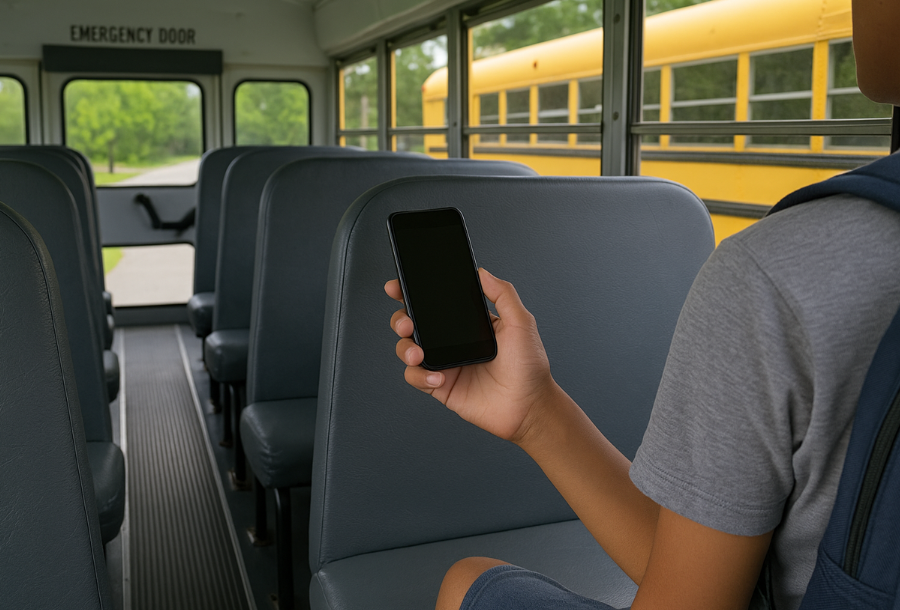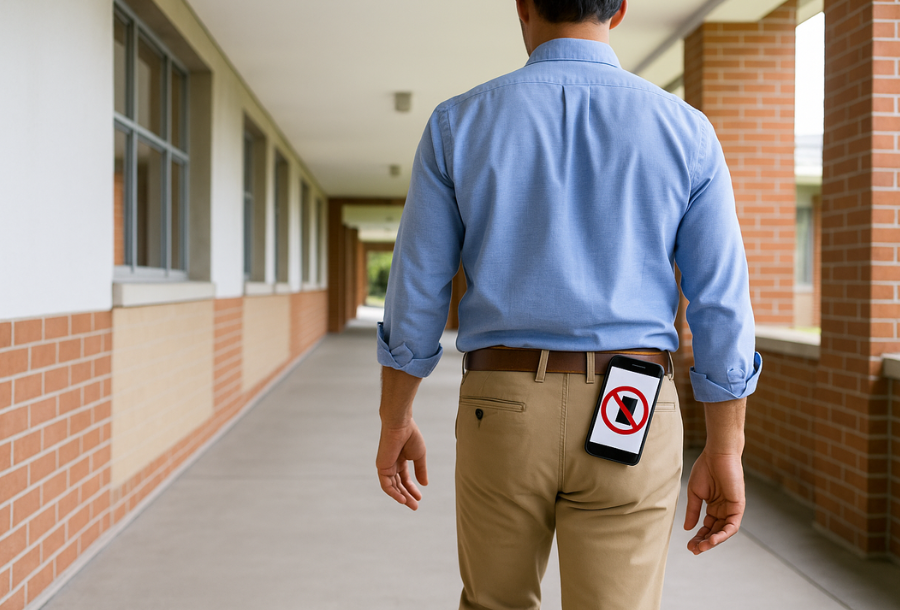In July 2025, Texas enacted HB 3634—widely known as the Texas school phone ban—prohibiting cellphone use in public school classrooms. This step was taken to increase academic focus, but now it is also discussing topics like public safety, accident prevention, and legal responsibility.
This law may do more than regulate devices—it may help prevent accidents. From hallways to highways, distractions caused by smartphones continue to cause preventable injuries, especially among students and teens.
Let’s examine how the Texas new cellphone law intersects with issues like distracted student accidents, cellphone accident prevention, and broader public safety concerns, including distracted driving.
What the Texas School Phone Ban Means
HB 3634 directs all public school districts to ban non-educational cellphone use during class time. Each school must now enforce clear rules, with most implementing one or more of the following:
- Lockable pouches to store phones during lessons
- Designated phone-free zones
- Strict penalties for unauthorized use
- Allowances only for emergencies or medical needs
By passing the Texas school phone ban, the state aims to reduce distractions, cut down on classroom disruptions, and encourage safer behavior patterns among students, both in and out of school.
Why Texas Moved Toward a Ban
1. Spike in Student Disruptions
School administrators say that as digital distractions increase, disciplinary problems such as cheating with AI tools, cyberbullying, and fights with social media have increased. Between 2022 and 2024, Texas recorded a 22% increase in behavior-related incidents, many directly linked to smartphone misuse.
2. Rising Physical Risks
It’s not just academics at stake. It has become a common thing for students to be distracted by their mobile phones in the hallway, fight for viral videos, and go out on the road while texting. The goal behind no phones in schools is to prevent these accidents by promoting awareness and accountability.
Distraction and Accidents: What the Data Shows
A. Pedestrian Risks
Mobile phone destruction causes 60% of pedestrian injuries among teenagers, according to the National Safety Council. Students walking through hallways or crosswalks while texting are often unaware of their surroundings.
School staff have reported frequent injuries involving:
- Students bumping into lockers or walls
- Missed stair steps during class transitions
- Falling during sports due to lack of attention
B. Traffic Hazards
Distraction doesn’t end when students leave school. Distracted driving is a major issue among young Texans. In 2024, over 500 fatal crashes involved phone use behind the wheel, according to TxDOT.
Most of these drivers were aged 16–19, many having just graduated high school. If these students practiced safer habits in school, such as the Texas school phone ban, they might carry that discipline into driving behavior as well.
C. Emotional and Cognitive Effects
Phones don’t just pose a visual distraction—they impair focus and reaction time. Studies show that:
- Reaction time decreases by 20% when phones ring during lessons or tests
- Constant alerts increase stress and reduce cognitive performance by up to 40%
- Students exposed to frequent notifications are slower to respond in real-world emergencies
By reducing these distractions, the Texas new cellphone law supports both learning and physical safety.

The School-to-Street Connection
The logic is simple: behavior becomes habit. A student who respects no-phone policies in class is more likely to respect no-phone policies while driving, crossing a street, or working a part-time job.
One Dallas-area parent shared, “Since her school implemented the ban, my daughter has started leaving her phone in her backpack at dinner and doesn’t touch it while driving.”
This connection highlights how cellphone accident prevention can begin at the educational level.
Are Phones a Legal Risk?
Personal injury cases are beginning to reflect how smartphone distraction contributes to fault. Lawsuits are no longer limited to distracted driving—they include scenarios like:
- Student injuries during fights being filmed instead of stopped
- Slip-and-falls in hallways where both students were on their phones
- Accidents during sports events caused by lack of attention
Parents searching for an injury lawyer near me may now need to consider if phone distraction played a role in their child’s injury. If so, liability could shift based on enforcement of school policies and how clearly students were warned.
Will the Ban Actually Prevent Accidents?
Early signs are promising. Florida and Indiana, which passed similar laws in 2023, recorded:
- Fewer disciplinary cases linked to online disputes
- Decreases in school-based injury reports
- Better response rates during emergency drills
In Texas, pilot programs in Austin ISD and Katy ISD reported:
- 30% fewer hallway-related accidents
- 24% improvement in student participation during fire drills and lockdowns
These statistics suggest that the Texas school phone ban is not just a symbolic move—it’s a practical safety measure.
What Can Families and Educators Do?
For Parents:
- Limit phone use during meals, homework, and driving
- Model focus by putting away devices at home
For Teachers:
- Be consistent with the enforcement of school policies
- Make class time engaging to reduce temptation
For Students:
- Treat the ban as a reset button
- Recognize that phones can wait—safety and awareness can’t
Looking Beyond the Classroom
The logic behind no phones in schools could apply to:
- Gymnasiums and locker rooms
- Public buses and school transportation
- Teen workplaces like fast food restaurants
- Crosswalks near school zones
As the Texas school phone ban gains attention, other states and school districts are watching closely. Insurance companies, educators, and even municipal traffic boards may begin to adopt stricter phone-use policies aimed at reducing distractions.
This policy may be the first step toward redefining what safety means in a hyper-connected generation.
What To Do If an Accident Happens
Even with strong policies like the Texas school phone ban, accidents related to distraction still occur. When a student or teen is injured due to cellphone-related behavior—on school grounds or on the road—there may be grounds to pursue a case under Texas personal injury law.
Orange Law Firm represents families across Texas in cases involving:
- Distracted driving collisions involving teens or student drivers
- Injuries on campus caused by distracted student accidents
- Physical harm resulting from cellphone use during sports, hall changes, or unsafe behavior
- Cases involving cellphone accident prevention failures in school or public settings
If you’re searching for an injury lawyer near me, our team is ready to evaluate your situation and explain your options clearly.
Call Orange Law Firm at 713-885-9787 or email contact@orangelaw.us to schedule your free consultation.



